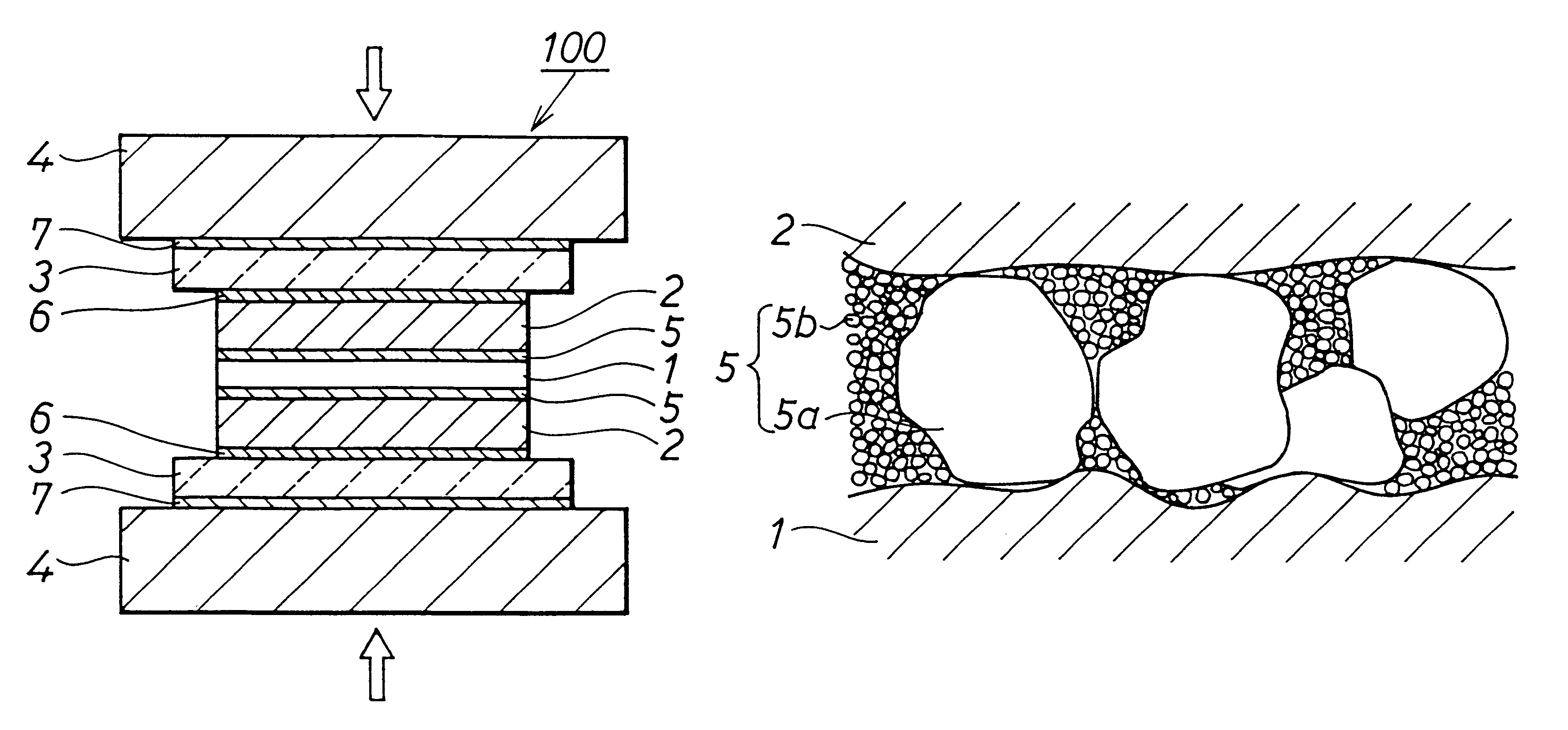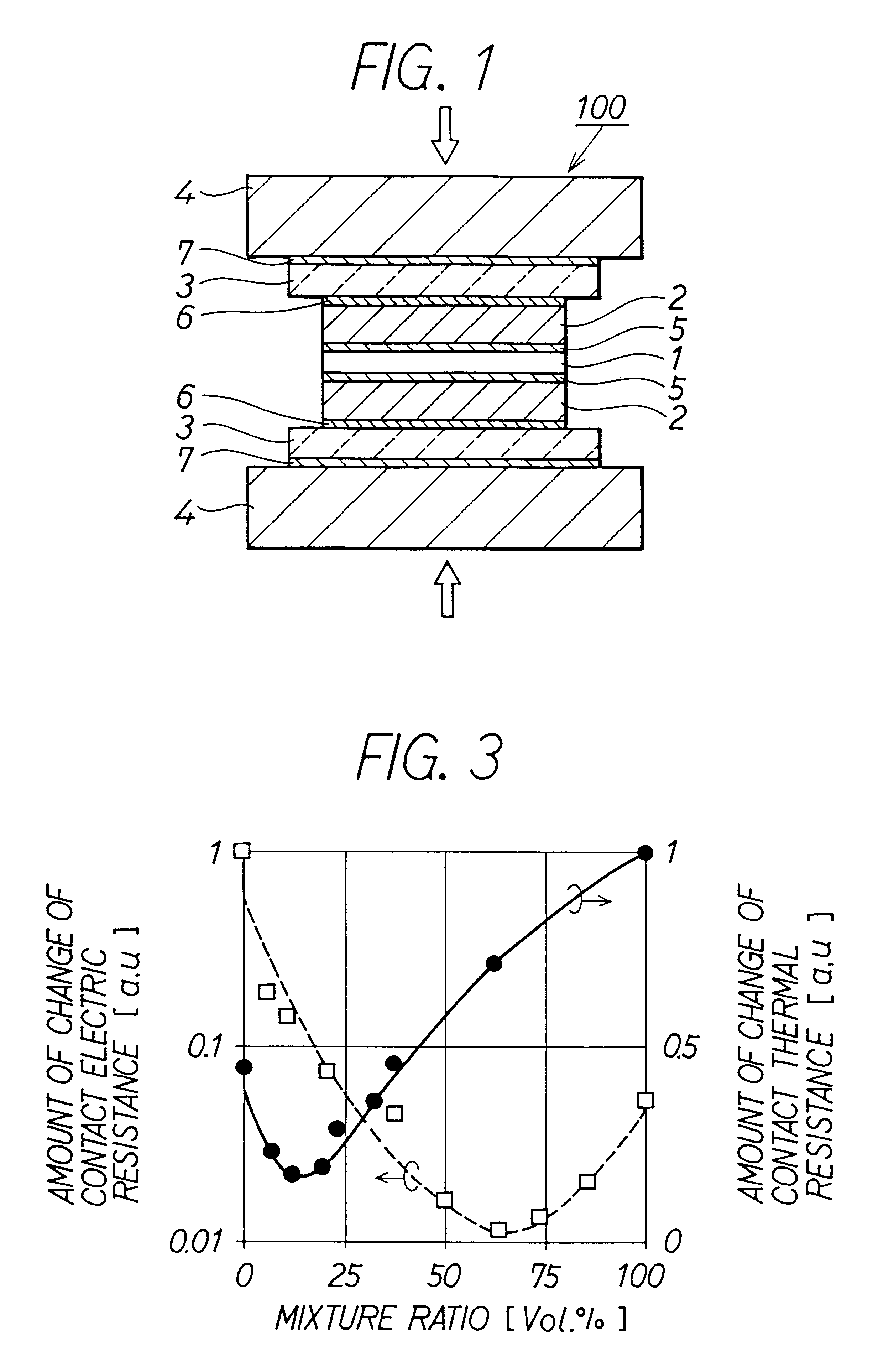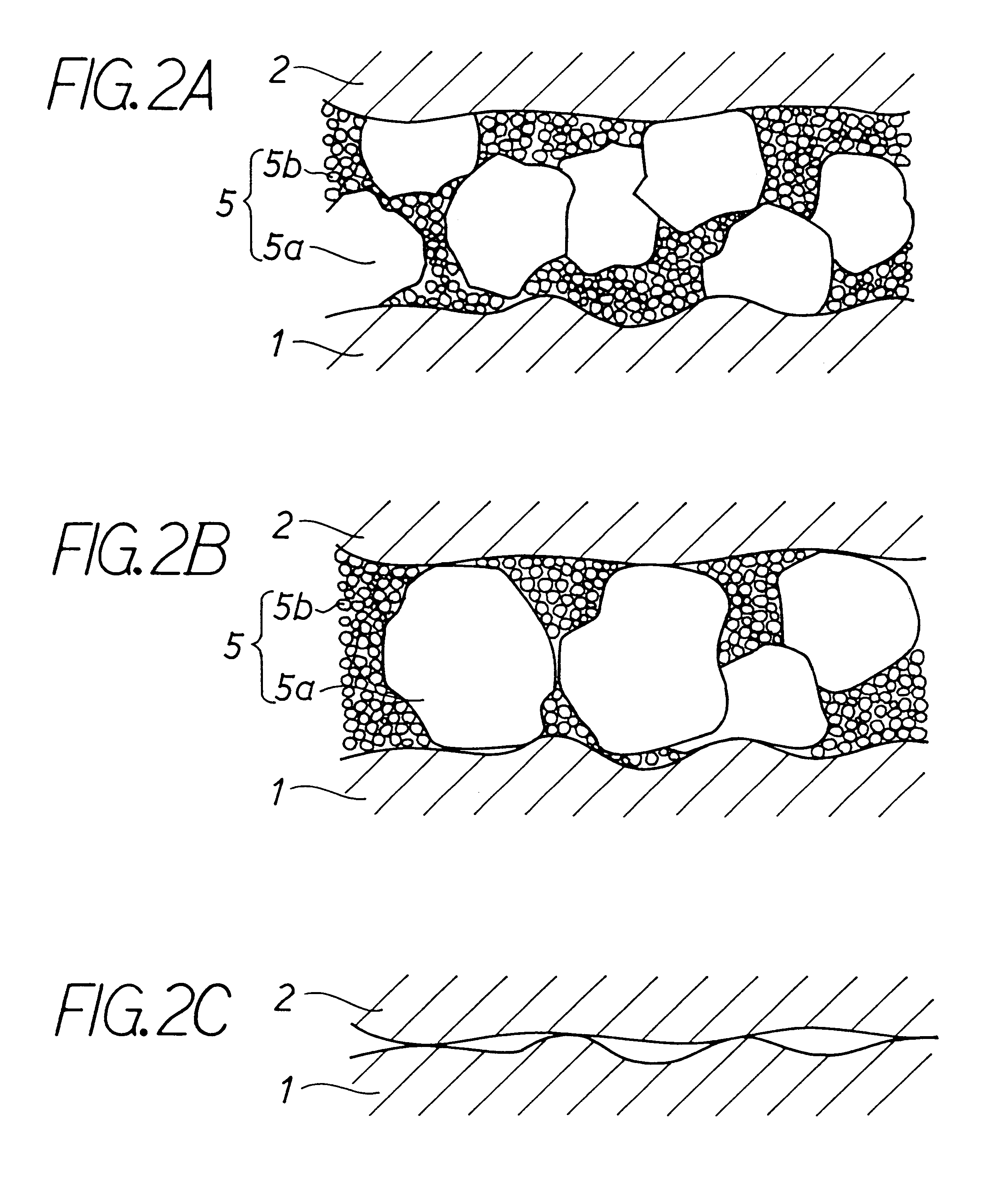Electric apparatus having a contact intermediary member and method for manufacturing the same
a technology of contact intermediary and electric equipment, which is applied in the direction of electrical equipment construction details, transportation and packaging, layered products, etc., can solve the problems of inability to say that the structure can sufficiently reduce the thermal resistance, and difficulty in reducing electrical resistan
- Summary
- Abstract
- Description
- Claims
- Application Information
AI Technical Summary
Benefits of technology
Problems solved by technology
Method used
Image
Examples
fourth embodiment
The fourth embodiment can be applied to a semiconductor device other than the pressed-contact type as shown in FIG. 7 as well as the pressed-contact type semiconductor device. Furthermore, it is acceptable to other semiconductor device in which the heat-emitting element is sandwiched by a pair of electrode members, which have both the thermal buffer function for buffering the heat from the heat-emitting element and the electrode function for taking out the electric signals from the heat-emitting element, and the electrode members are sandwiched by a pair of radiating member from the outer side.
fifth embodiment
[Fifth Embodiment]
FIG. 9 is a schematic sectional view of a pressed-contact type semiconductor device 300 of a fifth embodiment according to the present invention. The pressed-contact type semiconductor device 300 is formed by adding a covering member 20 made of insulating material to the pressed-contact type semiconductor device 100 shown in FIG. 1.
In this embodiment, the covering member 20 is formed in a frame shape corresponding to an outer shape of the semiconductor element 1 and the electrode plate 2, and is provided so that an inner surface of the frame contacts with the outer peripheral surface of both the semiconductor element 1 and the electrode plate 2. Thus, the covering member 20 covers a surrounding portion of a region where the semiconductor element 1 contacts with the electrode plate 2 via the contact intermediary member 6 and a surrounding portion of a region where the electrode plate 2 contacts with the insulating plate 3 via the contact intermediary member 6. Here,...
PUM
 Login to View More
Login to View More Abstract
Description
Claims
Application Information
 Login to View More
Login to View More - R&D
- Intellectual Property
- Life Sciences
- Materials
- Tech Scout
- Unparalleled Data Quality
- Higher Quality Content
- 60% Fewer Hallucinations
Browse by: Latest US Patents, China's latest patents, Technical Efficacy Thesaurus, Application Domain, Technology Topic, Popular Technical Reports.
© 2025 PatSnap. All rights reserved.Legal|Privacy policy|Modern Slavery Act Transparency Statement|Sitemap|About US| Contact US: help@patsnap.com



